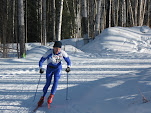Taking Ownership of Injuries
Neverthess, don't you envy those who seem to have the ability to rack up unbelievable miles and workouts and they never seem to get hurt? As one who has had just about every common running injury in the book--let's see, stress fractures, fractures and sprains from tripping, plantar fasciitis, achilles tendonitis, runners knee, all sorts of tendonitis (foot, knee, hip), shin splints--possibly compartment syndrome, arthritis, illiotibial band of knee, illiotibial band on hip, piriformis. Those are the ones that I can remember over 35 years of running that have knocked me out from weeks to months and a couple times a year or two of training.
I've seen three time Olympian Dathan Ritzenhein run--back when he was in college at CU Boulder--and I'm no Ritz, but when it comes to injuries I do feel like an older and much slower parody.
All that said, how you approach an injury or setback can be a mirror of character.
When feeling an injury coming on runners take several common approaches: run through it and hope for the best; back off or stop until it goes away; and then something sort of in between dyad--a passive and an active approach. A passive approach is to cut back or stop training and wait and see, to be active is to take a little time to figure out what is happening before treating the symptoms, and if needed to find alternative training while recovering. I've tried both of these and much prefer the active approach, even though it is seldom pleasant. Who wants to spend hours doing boring little excercises that may or may not work, or experience the discomfort and inconvenience of icing, and this anathema to some--gasp cross training to keep fit?!
Suck it up I say. Stop whining. Do the work to rehabilitate your injury. Sometimes that involves measures to find medical attention and physical therapy. Not fun--espcially when the majority of doctors (even sports medicine docs) will look at you, shake their head and say "Well stop running, take up another sport." I've heard that at least seven or eight times going way back to my freshman year of college, into my 20s, 30s, 40s, and 50s. Take your verbal lumps, meds as needed, and jump into your rehab and cross training with the same verve as a 70 mile week doing your favorite workouts on your best routes.
However, if there is one silver lining to combating an injury it's a reminder that how much you enjoy running, training, racing, so when you do make it back you appreciate it that much more. In fact, I often get a boost in motivation--and drop in race times--after coming off an injury.
So don't just sit back, feeling sorry, get out there and fix it and do what it takes keep fit while you're working things out.
All that said, what? Am I injured? I'll plead the 5th on that, or just stay in denial.
The nagging foot pain--going back to tripping on a root at the 11 mile Musk Ox trail race a year ago, and subsequently twisting the same foot on the same section of trail this May--has been a bother all season and in May and June of this year "it was there" something I could feel and it after a hard workout or race but it would go away after a day or two of easy running or rest.
I ran easy for a week or two after the Midnight Sun Run and entertained the idea of a fall marathon but I ended up with two sore heels after a single 15 miler in early July. I muddled through the rest of the month, logging in adequate miles for the half marathon, but the pain level was creeping up each week but recovery wasn't happening. The Santa Claus Half in the first week of this month rendered me hobbled for a few days, so I cut back (running every other day), and did a little icing, which was enough to allow me to line up for the Senior Games 10K. I did that, but that effort--which was only at tempo run pace-set me back even more. So the only choice was to take a couple weeks off.
I cross trained with rollerskiing, weights, and cycling, took NSAIDs as needed, but only iced a few times. A semi-active/semi passive approach. After two weeks, enough! So I've added the daily ice bucket for my foot, higher dose Naproxin for a few days, and exercises to rehab my foot (both actually).
It feels better already I'm heading out for a five or six mile run this afternoon.


2 Comments:
Great post, Roger!
Like you, age and experience have taught me that I ALWAYS do better (mentally and physically) by staying active and focusing on x-training and PT whenever running injuries crop up.
Plain old rest or -- worse, "running through it" -- almost never takes care of the problem long term.
I'll have to check your blog more often!
Great blog thanks for posting
Post a Comment
Subscribe to Post Comments [Atom]
<< Home